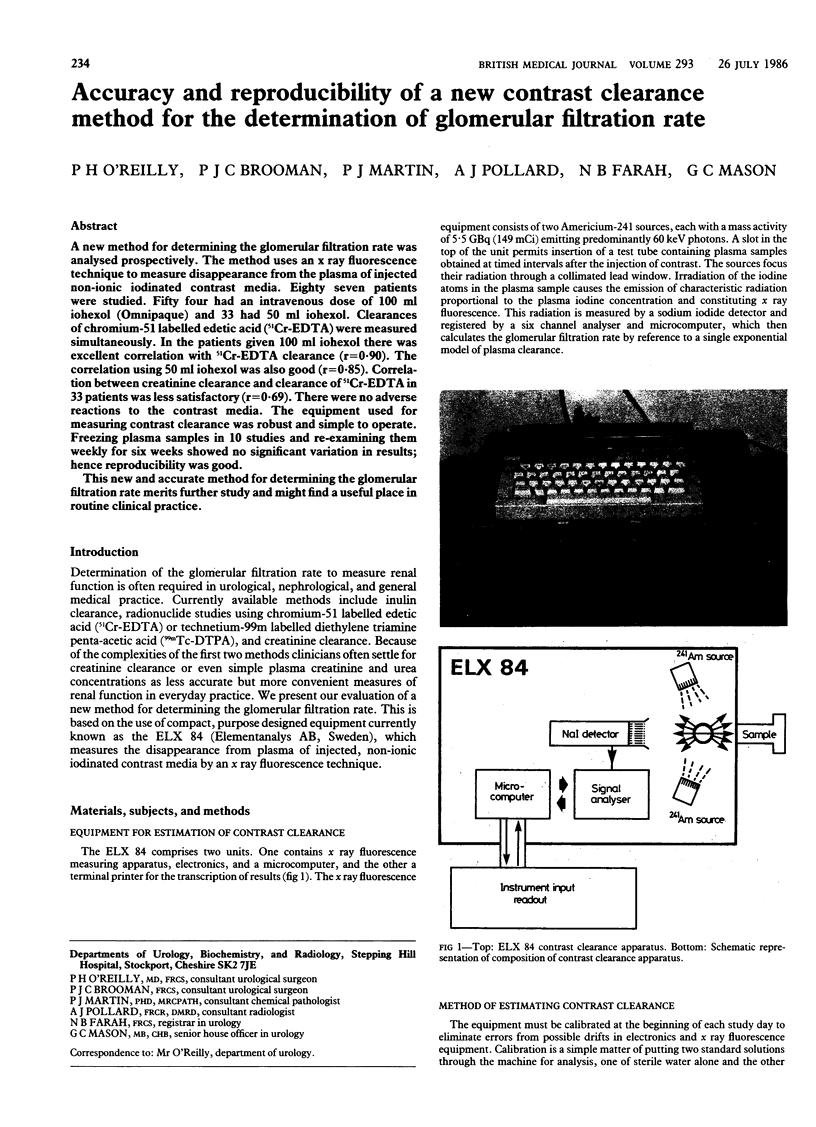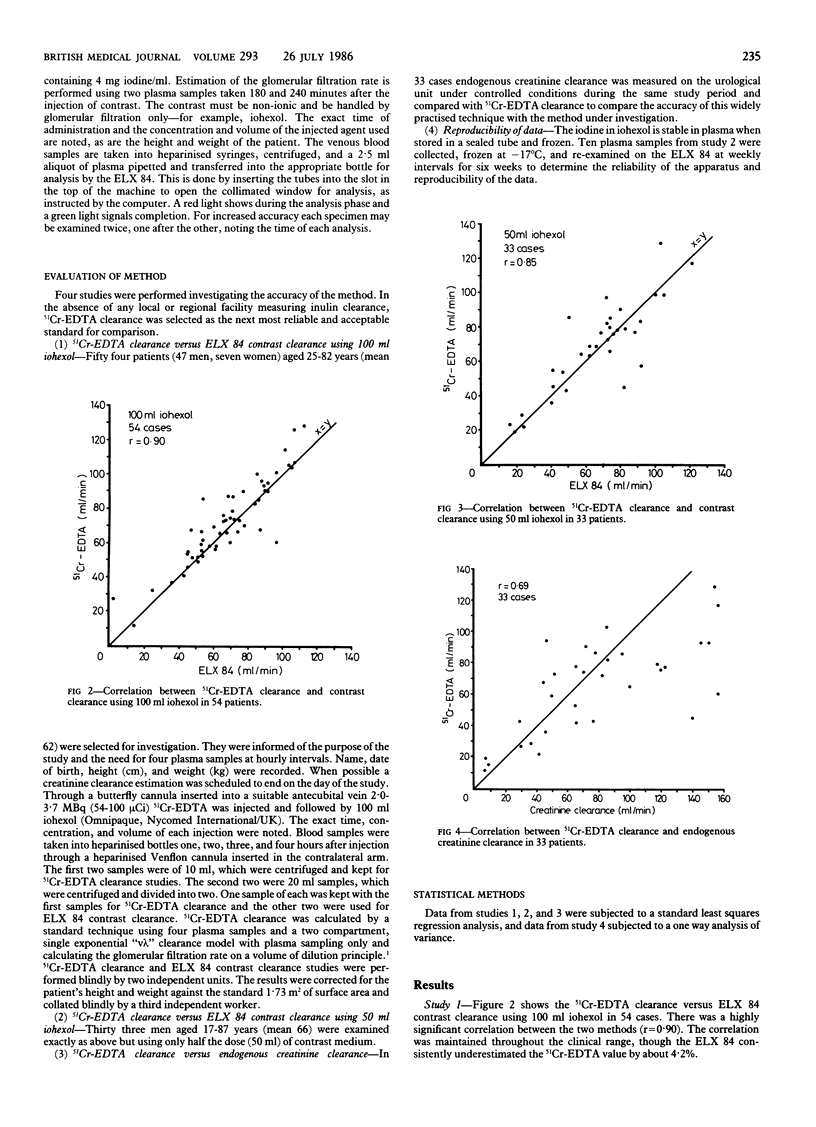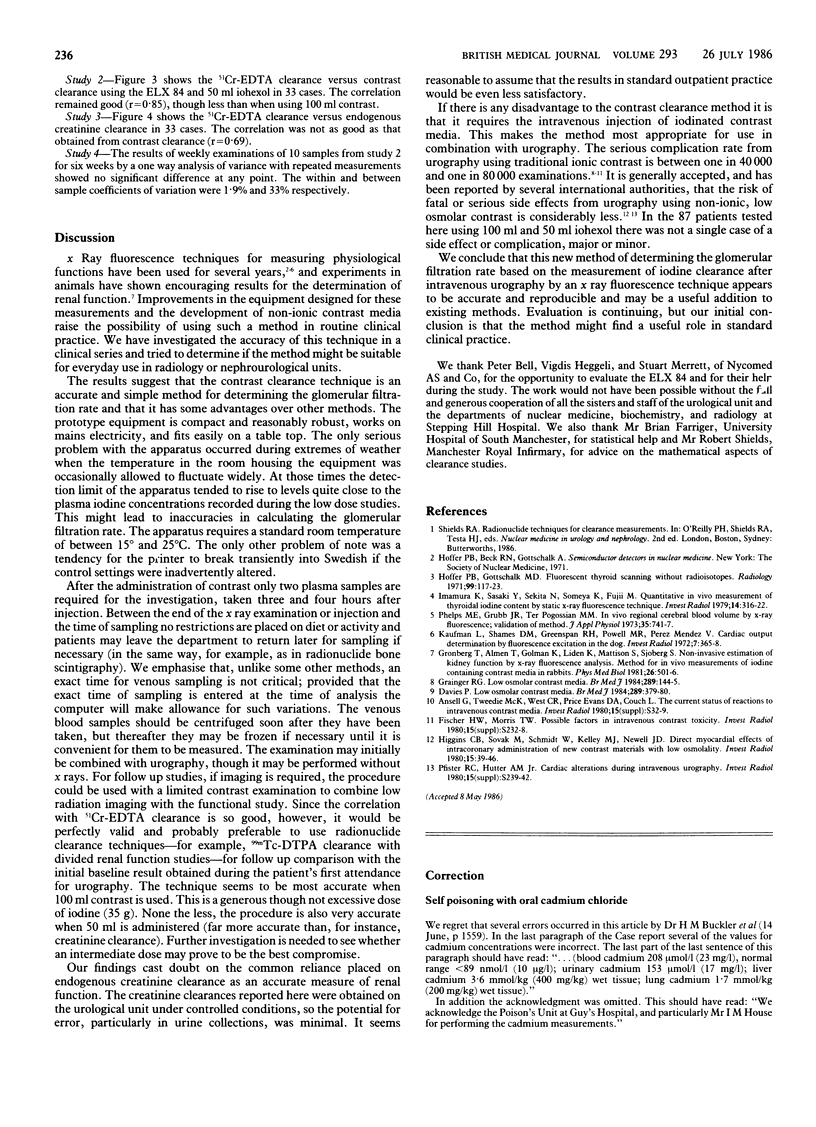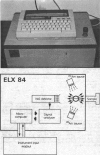Abstract
A new method for determining the glomerular filtration rate was analysed prospectively. The method uses an x ray fluorescence technique to measure disappearance from the plasma of injected non-ionic iodinated contrast media. Eighty seven patients were studied. Fifty four had an intravenous dose of 100 ml iohexol (Omnipaque) and 33 had 50 ml iohexol. Clearances of chromium-51 labelled edetic acid (51Cr-EDTA) were measured simultaneously. In the patients given 100 ml iohexol there was excellent correlation with 51Cr-EDTA clearance (r = 0.90). The correlation using 50 ml iohexol was also good (r = 0.85). Correlation between creatinine clearance and clearance of 51Cr-EDTA in 33 patients was less satisfactory (r = 0.69). There were no adverse reactions to the contrast media. The equipment used for measuring contrast clearance was robust and simple to operate. Freezing plasma samples in 10 studies and re-examining them weekly for six weeks showed no significant variation in results; hence reproducibility was good. This new and accurate method for determining the glomerular filtration rate merits further study and might find a useful place in routine clinical practice.
Full text
PDF


Images in this article
Selected References
These references are in PubMed. This may not be the complete list of references from this article.
- Fischer H. W., Morris T. W. Cardiovascular radiology. Possible factors in intravascular contrast media toxicity. Invest Radiol. 1980 Nov-Dec;15(6 Suppl):S232–S238. doi: 10.1097/00004424-198011001-00049. [DOI] [PubMed] [Google Scholar]
- Gotsman M. S., van der Horst R. L., Winship W. S. The chest radiograph in primary myocardial disease. Radiology. 1971 Apr;99(1):1–13. doi: 10.1148/99.1.1. [DOI] [PubMed] [Google Scholar]
- Grainger R. G. Low osmolar contrast media. Br Med J (Clin Res Ed) 1984 Jul 21;289(6438):144–145. doi: 10.1136/bmj.289.6438.144. [DOI] [PMC free article] [PubMed] [Google Scholar]
- Grönberg T., Almén T., Golman K., Lidén K., Mattsson S., Sjöberg S. Non-invasive estimation of kidney function by x-ray fluorescence analysis. Method for in vivo measurements of iodine-containing contrast media in rabbits. Phys Med Biol. 1981 May;26(3):501–506. doi: 10.1088/0031-9155/26/3/012. [DOI] [PubMed] [Google Scholar]
- Imamura K., Sasaki Y., Sekita N., Someya K., Fujii M. Quantitative in vivo measurement of thyroidal iodine content by static x-ray fluorescent technique: some preliminary clinical observations. Invest Radiol. 1979 Jul-Aug;14(4):316–322. doi: 10.1097/00004424-197907000-00009. [DOI] [PubMed] [Google Scholar]
- Kaufman L., Shames D. M., Greenspan R. H., Powell M. R., Perez-Mendez V. Cardiac output determination by fluorescence excitation in the dog. Invest Radiol. 1972 Sep-Oct;7(5):365–368. doi: 10.1097/00004424-197209000-00002. [DOI] [PubMed] [Google Scholar]
- Low osmolar contrast media. Br Med J (Clin Res Ed) 1984 Aug 11;289(6441):379–380. doi: 10.1136/bmj.289.6441.379-b. [DOI] [PMC free article] [PubMed] [Google Scholar]
- Phelps M. E., Grubb R. L., Jr, Ter-Pogossian M. M. In vivo regional cerebral blood volume by x-ray fluorescence: validation of method. J Appl Physiol. 1973 Nov;35(5):741–747. doi: 10.1152/jappl.1973.35.5.741. [DOI] [PubMed] [Google Scholar]



